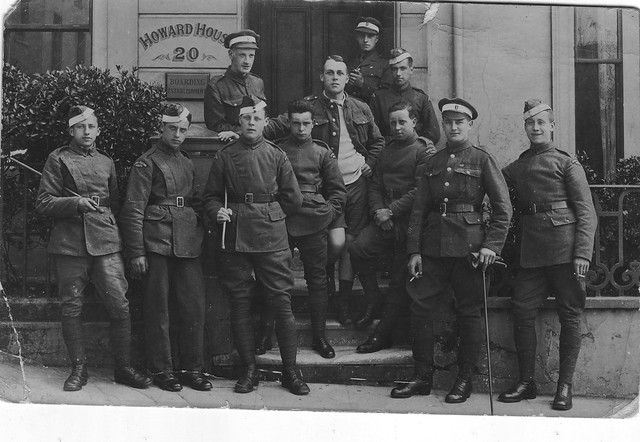Home » Hastings
Category Archives: Hastings
World War 1914-1918 The Centenary Commemorations begin on the BBC
As a boy my grandfather would tell me stories of his time on the Western Front during the First World War and how it transferred to the Royal Flying Corps and trained as a fighter pilot. It was a pleasure therefore to introduce him to the audience of BBC South Today at the start of a year long commemoration of the 1914-1918 war.
My own interest is shifting from amateu historian and research sleuth in relation to my grandfather’s rather unusual story – he startef out in the Durham Light Infantry, was transferred to the Machine Gun Corps … and at one stage was asked if he’d like to join the Tank Corps. Then right at the end of 1917 having survived the Third Battle of Ypres, known as Passchendaele, his papers came through and he spent 1918 training to be a pilot, starting in Hastings where he got military training, morse code and topography.
To support my interest I am taking a Masters degree in First World War studies at the university of Birmingham.
Royal Air Force – Military Training – Hastings 1918
Military Training & the beach – Hastings June 1918
From interviews conducted in 1992 with Jack Wilson.
We got general military training at Hastings.
It was old hat to me; I’d done it all with Durham Light Infantry in 1915 and then I had two and a half years on the Front Line. I should have gone straight on to Bristol.
We were taught drill, discipline, military law, aeronautics and gunnery.
We drilled and exercised in the various parks in Hastings and at low tide we went down onto the beach and put on a drilling display by the pier. Other times we marched along the front, everyone taking their turn to lead the whole squadron.
We used to go on the front and take the whole squadron drilling them.
You had to take your turn. You marched the lads to the lectures we had in front of all the holidaymakers. They put pictures of us in ‘The Hastings and St.Leonards Pictorial Advertiser.’
You got topography, sort of local map reading, and Morse Code. I never forget S.O.S.
As well as holidaymakers there were convalescing soldiers in blue uniforms on the pier; they were looked after by nurses from Old Hastings House
There were fisherwomen laying clothes on the beach to dry and horses turning capstans to bring boats up the beach.
We swam in the sea; I have photographs of that.
And I did this lovely ‘sand scratching’ of a Roman Soldier on the beach that could have been viewed from the pier.






